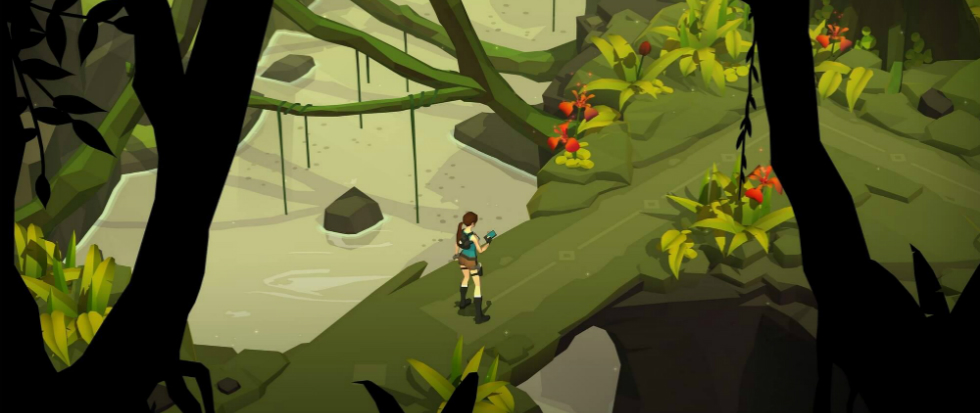
GRIS: Her Journey
She awakens in the palm of a stone hand raised high in the sky. She tries to sing, but her voice is failing her. The hand begins to crumble, and she tumbles from the sky to a land devoid of color. She starts walking, progressing through the color-deprived landscape to restore colors to a world bathed in shadow. As a game, GRIS is also caught in a shadow, this one of its own making. It aspires to be a wordless, moving piece of art in the same tradition as Journey, but in trying to bite that game’s minimalist storytelling, GRIS ends up eschewing storytelling entirely, resulting in a lovingly crafted game with nothing to say.
It’s clear from the start that GRIS really wants to be Journey. The very first visual you have is of the player character, who has very similar body proportions to Journey’s avatars. There’s even a part early in the game where your character slides on sand, a direct callback to one of the most iconic landscapes in Journey. Both games also feature no spoken dialogue or words, simply events that you’re supposed to suss out what they mean on your own. The worlds of both of these games are also seemingly ruined, with the central conceit approaching but never quite spelling out how it all happened. Comparisons to Journey are inevitable because GRIS invites them so eagerly.
Her mission is clear: to bring back color to the world and find her voice. In service to this mission, she walks the land and uses the stars themselves to assist her journey, using constellations to form bridges to new areas. For every color she restores, a new environment opens to her. And every time she restores a color, it’s from the palm of a stone hand like the one she started her journey in.
The problem is that the developers of GRIS don’t understand what made Journey work so well. In trying to be a wordless mood piece, the game goes too far in that direction and forgets to tell any sort of story beyond what’s happening on the surface. There’s no visual clues as to what happened in this world, nor is there any nod to whatever themes the game is chasing. According to the developers, GRIS is supposed to be about loss and grief, but you’d never know it if you didn’t hear it from them.
Soon after she restores some color to the world, a being of pure, dripping shadow attacks her and gives chase at different points in her journey. First it takes the form of a giant bird. Then, an eel, and finally, the girl it’s chasing. It’s unclear as to what it wants or why it’s chasing her. The only thing that’s certain is that it’s relentless. It doesn’t stop until it finally eats her, which ends up being a mistake as she destroys it from the inside out.
What GRIS fails to do and Journey succeeds at is seeding contextual clues across the game’s world. Journey accomplished this with, among other things, pictographs that were scattered throughout the game. They provided innuendo as to the state of the world before you started experiencing it. And it isn’t just lore that’s alluded to. The reactions of the player character and how they interact with the world speak volumes without saying a word. The closest GRIS comes to this is when the girl you’re controlling befriends a woodland creature. Otherwise the narrative and themes are so threadbare that they might as well not be there.
Finally conquering the darkness, she ascends the last constellation and finds a giant statue of a woman that she put together through sheer force of will inside the shadow creature. She gets into the palm of her hand and begins singing. Tears in her eyes, she kisses the statue. The statue itself isn’t truly whole, though. It’s a bunch of fragments that have been levitated together to make it seem whole again. GRIS tries to have meaningful themes, and the seeds of something meaningful are in the details like the cracked statue, but it ultimately shies away from even approaching anything remotely concrete, instead being way too subtle in the things it really wants to say. The developers of GRIS learned the wrong lessons from Journey, resulting in a beautiful journey that, like its protagonist, has no voice.




